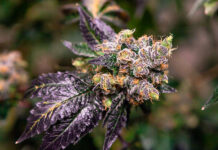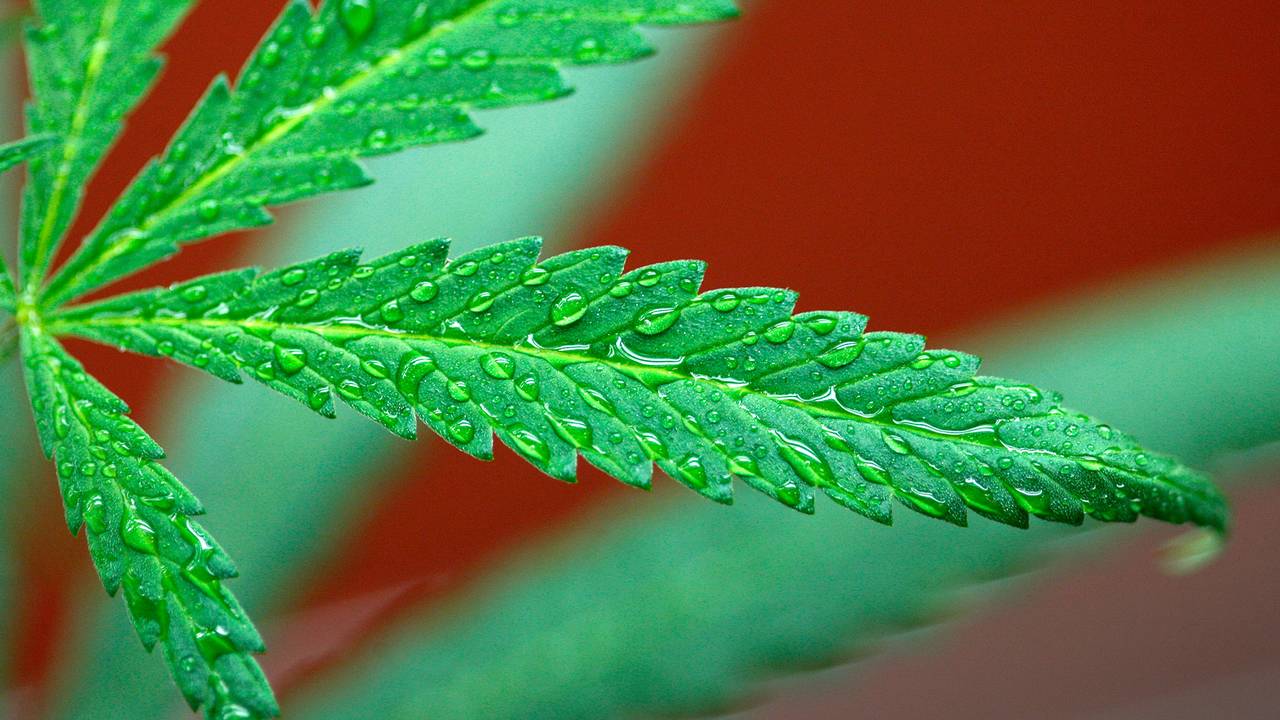
As cannabis legalization gains popularity around the world, many are still wondering — is cannabis addictive? The debate can be seen in media reports, in legislative discussions and in comments on social media.
The term “addiction” has a rich history, often defined as a disease that causes physiological dependence, changes in the brain’s reward circuitry, and the development of withdrawal symptoms. The key here is understanding that addiction, with regard to marijuana or otherwise, is not a black-and-white issue.
Cannabis does not induce the same degree of physical withdrawal symptoms that opiates or alcohol do, but cannabis withdrawal symptoms do exist. When such symptoms occur, they tend to circulate around increased feelings of anxiety, agitation, poor mood, and sleep difficulties.
“Symptoms are very similar to nicotine withdrawal,” said Adie Wilson-Poe, Ph.D., a neuroscientist and instructor at Washington University in St. Louis and a scientific adviser to Weedmaps. In some cases, chronic use is related to a pre-existing psychological condition, where cannabis is used as a potential coping mechanism, Wilson-Poe explained.
“This is a solid hypothesis, although data is sparse,” she said. “Many people with trauma, chronic pain, social poverty, health issues, etc., use cannabis as a coping tool. There are lots of other coping tools as well, such as self-medication with alcohol. There could be a harm reduction argument here, [along the lines that] cannabis is probably a safer self-medication coping skill than alcohol use.”
Photo by Nik Shuliahin on Unsplash
In that sense, when a dependence develops, cannabis may hinder one’s ability to develop healthier, more productive coping mechanisms — but is it addictive?
The 2001 book “The Science of Marijuana” follows decades of global research and estimated that 10 to 30 percent of regular cannabis users develop a dependency — 9 percent develop an addiction. Dependence is associated with cannabis use disorder (CUD), in which an individual experiences withdrawal symptoms when they no longer take cannabis. Adaptation of the brain also occurs, as cannabis reduces the production and sensitivity to its own endocannabinoid neurotransmitters.
In contrast, CUD can become an “addiction” when someone cannot stop using cannabis, even though it negatively interferes with their daily lives and relationships.
These findings were based on a survey of 8,000 participants between the ages of 15 and 64. With nicotine, about 32 percent of users will become addicted, resulting in approximately 1 out of every 5 deaths annually in the United States. To date, cannabis has not been attributed as the cause of a single death.
Why Do People Use Cannabis?
Although cannabis is often used socially, its medicinal use dates back thousands of years. Throughout the human body, endocannabinoids and their receptors are believed to play a role in the pathology of various disorders. Once cannabinoid receptors are stimulated, a variety of physiological processes occur, often improving a patient’s quality of life.
While clinical evidence is limited, the most common conditions related to cannabis and symptom reduction include cancer, HIV/AIDS, glaucoma, and multiple sclerosis (MS). Numerous states also recognize the potential of medicinal cannabis for inflammatory bowel disease, post-traumatic stress disorder (PTSD), chronic pain, epilepsy, and anorexia.
Cannabis may also support some opioid addicts and alcoholics during treatment. This was reported in a 2017 study, published in Clinical Psychology Review. An additional study found that U.S. states that approved medical cannabis saw a significant reduction in opioid use, resulting in on average a 25 percent lower annual opioid overdose mortality rate.
The Risks of Frequent Cannabis Consumption
While the idea of “marijuana addiction” is controversial, CUD is a growing concern. First referenced in the fifth edition of the Diagnostic and Statistical Manual of Mental Disorders, first published in 2013, this disorder is a combination of “marijuana dependence” and “marijuana abuse” — and can be rated as mild, moderate, or severe.
In order to be diagnosed with this disorder, users must meet the criteria for a minimum of two out of 11 symptoms related to a problematic pattern of cannabis use, such as increased cravings, a higher tolerance across time, or recurrent use despite issues within one’s personal or professional life.
“The most important thing to discuss in terms of CUD is how to avoid it. We know that dose and potency are positively correlated with CUD,” Wilson-Poe said “If you take high doses of THC, dabs, for instance, you’re at higher risk. Regular use is also associated with tolerance.
“A higher tolerance results in higher doses and in turn, symptoms of dependence and withdrawal. Moderate use with low to moderate potency products is the best way to avoid CUD.
When cannabis consumption is both heavy and frequent, users can also develop what’s known as cannabinoid hyperemesis syndrome (CHS) — a condition believed to be unique to cannabis users. When consumption exceeds three to five smoke sessions per day, particularly when consuming high-THC strains, symptoms of CHS are more likely to develop.
These symptoms include vomiting, nausea, and in some cases, significant abdominal pain. While research is still fairly limited, there are two key theories which aim to explain the development of CHS. The first theory, published in 2016 in Case Reports in Gastrointestinal Medicine, involves the dysfunctioning of CB1 and CB2 receptors following high-volume, extended use — whereas the second theory, published in 2018 in the Medical Cannabis and Cannabinoids journal, involves the storage of THC in fat cells. Those who use cannabis over extended periods are believed to have large fat reserves of THC, and following extended periods of stress or prolonged fasting, a “reintoxication” effect may occur.
While problematic under certain circumstances, neither CUD nor CHS are categorized under addiction.
While problematic under certain circumstances, neither CUD nor CHS are categorized under addiction. Click To Tweet
Are There Risks to Quitting Cold Turkey?
If you’re concerned that you may have CUD, CHS or are experiencing addiction-like symptoms, there is no harm in quitting cold-turkey. Unlike physically addicting substances such as alcohol and heroin, abruptly stopping the use of marijuana won’t make you sick. In fact, there is evidence that tolerance breaks are effective and beneficial.
“Although scientists don’t fully understand the mechanisms of tolerance, there is some evidence which shows that the CB1 receptor expression is diminished in chronic cannabis users, and that abstaining from use for 48 hours is sufficient to bring their expression levels back up to those that are no different from cannabis-naive people,” Wilson-Poe said.
Cannabis is Particularly Risky for Adolescents
The risk-benefit ratio of cannabis use becomes more much controversial when considering its impact on teenagers whose brains have not yet fully developed — particularly in regards to synaptic pruning.
This natural process eliminates extra synapses, the connections between neurons, throughout early childhood and adulthood, initiating more efficient brain function. Being a critical part of development, key neural circuits become stronger as unnecessary connections are erased and more streamlined. Since drastic changes are occurring during this period, heavy cannabis consumption as an adolescent may prevent the formation of healthy neural connections.
Photo by Sammie Vasquez on Unsplash
Dr. Lynn Silver is a senior adviser at the Public Health Institute for chronic disease and obesity. She also created the Getting it Right From the Start project to advance public health and social equity in cannabis policy. She spoke on a panel May 15, 2018, during the North American Cannabis Summit where she voiced concerns surrounding cannabis and its addictive properties, particularly among adolescents.
Although the Science of Marijuana authors estimated the risk of marijuana “addiction” is 9 percent among the adult population, this number spikes to 16 percent when individuals first begin using during their adolescence. That means the addiction risk rises 44 percent when marijuana is consumed by youths.
As she stated during the summit, the greatest determinants surrounding the impact of legalization will be how many people are using cannabis, how intensely, and at what age.
While there are risks associated with CUD and CHS following heavy cannabis consumption, the majority of cannabis users do not develop an addiction. It is important to note that “addictive” and “habit-forming” are not one and the same.
It is important to note that “addictive” and “habit-forming” are not one and the same. Click To Tweet
Any substance that activates reward centers in the brain can be addictive, but clinical addiction has specific criteria that cannabis does not meet. At this time, more research is required in order for the medical community to come to a consensus.















